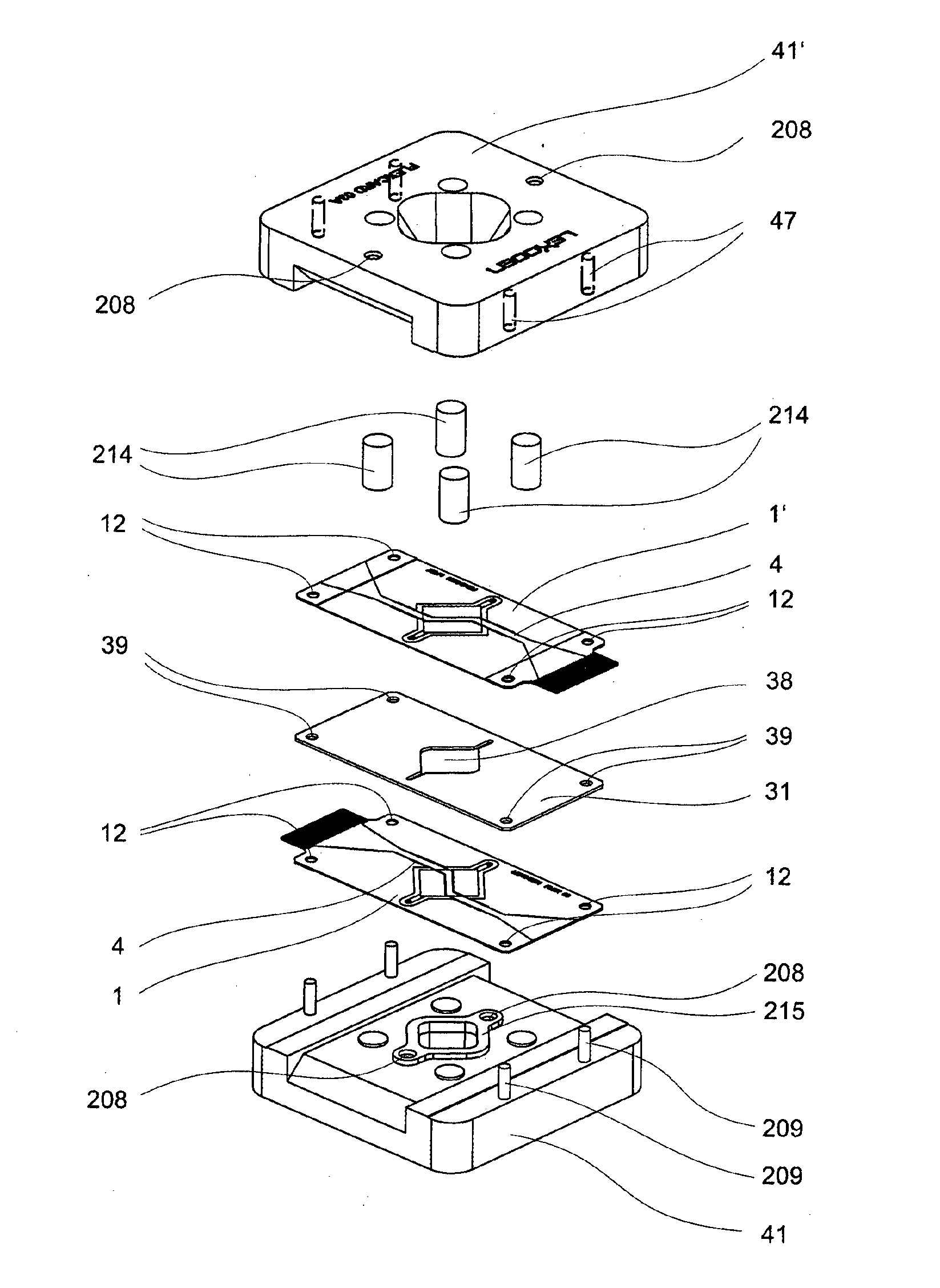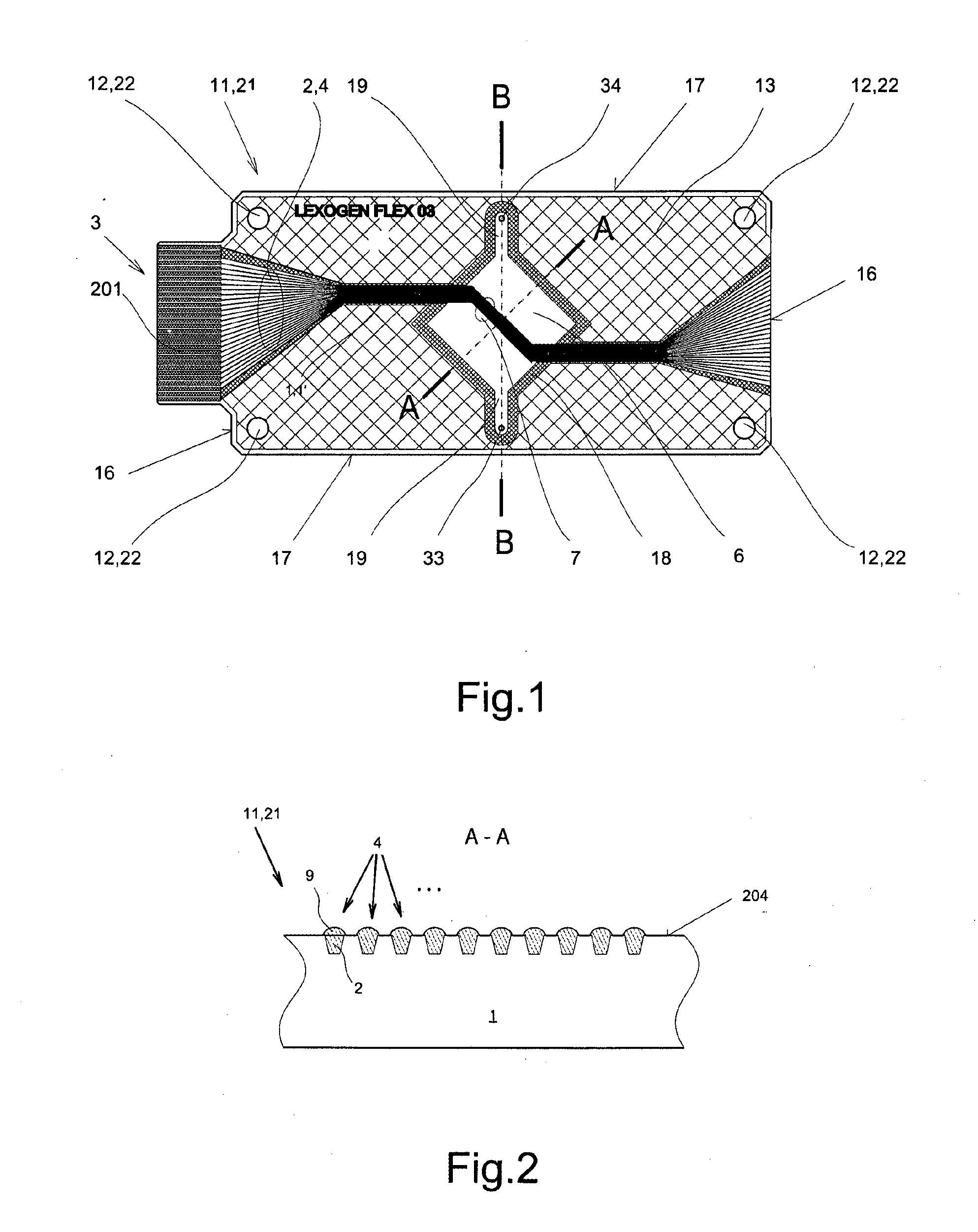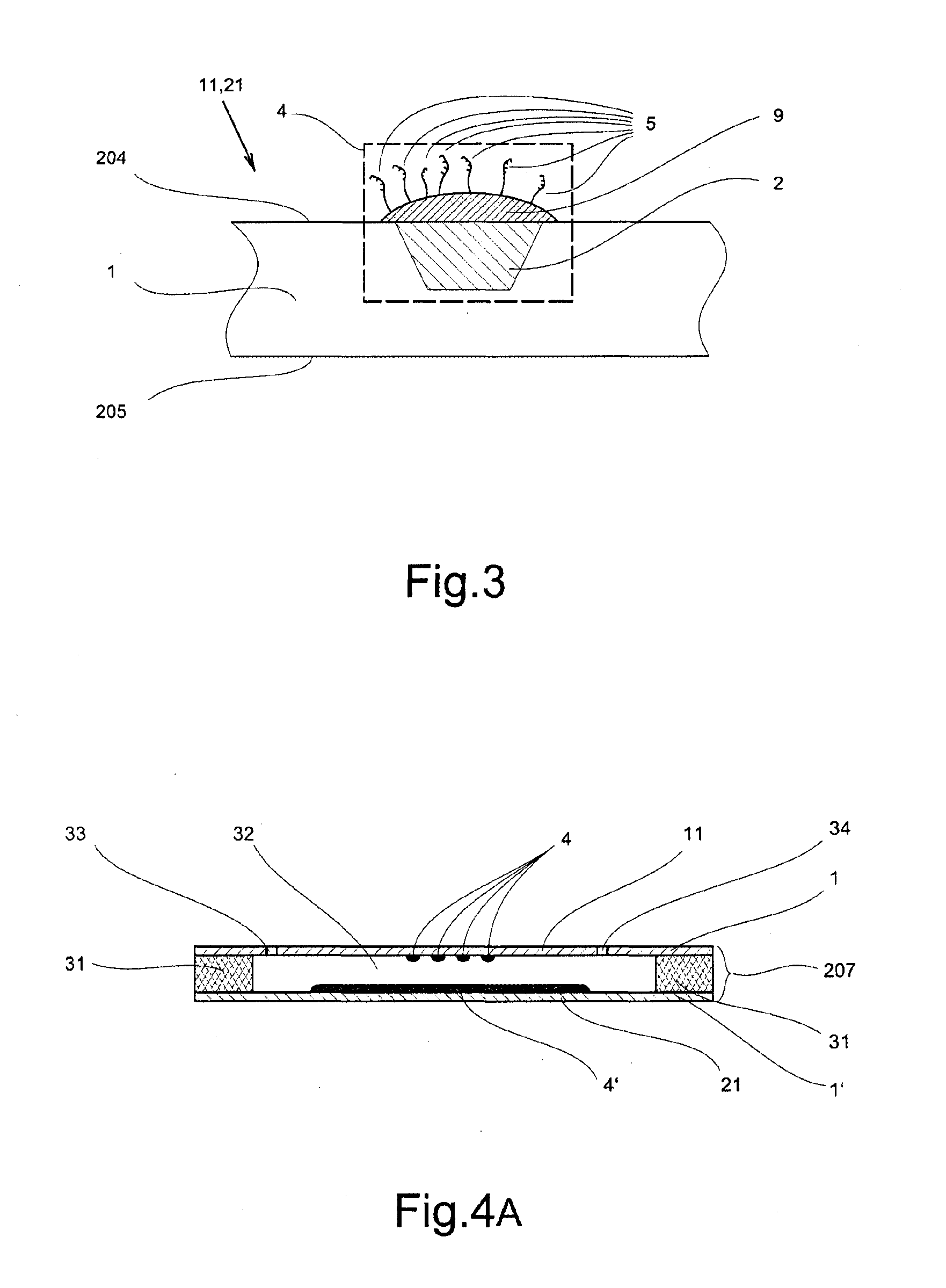Flexible sensor carrier and method
a sensor carrier and flexible technology, applied in the field of sensor carriers, can solve the problems of limited mechanistically amplification efficiency, and inability to carry on solid supports, etc., and achieve the effect of facilitating the reaction as to the invention objective, facilitating the distance between the sensor carriers, and facilitating the modification of the obj
- Summary
- Abstract
- Description
- Claims
- Application Information
AI Technical Summary
Benefits of technology
Problems solved by technology
Method used
Image
Examples
Embodiment Construction
[0062]A sensor carrier 11 according to a first example of the invention is depicted in FIG. 1. The sensor carrier 11 comprises a flexible film 1 with twenty four functionalized sensor elements 4. The base film 1 of the sensor carrier is made of a heat stabilized polyethylene terephthalate (PET), such as MELINEX ST504 (DuPont Teijin Films, USA).
[0063]Typically, the film 1 can be made of any material which is not permeable for the constituents of the solution used in the reaction, is compatible with, i.e. inert with respect to, the reaction, and withstands the temperature changes required for PCR thermocycling under mechanical load without permanent deformations. Optimally, the material has a good thermal conductance, so the rapid temperature changes of the analyte in the chamber 32, i.e. on the sensor side 204, 204′ of the film 1, can be achieved when the film is cooled or heated on its non-sensor side 205, 205′. It is of advantage to use a transparent material if optical readout wit...
PUM
| Property | Measurement | Unit |
|---|---|---|
| flexural modulus | aaaaa | aaaaa |
| thickness | aaaaa | aaaaa |
| flexural modulus | aaaaa | aaaaa |
Abstract
Description
Claims
Application Information
 Login to View More
Login to View More - R&D
- Intellectual Property
- Life Sciences
- Materials
- Tech Scout
- Unparalleled Data Quality
- Higher Quality Content
- 60% Fewer Hallucinations
Browse by: Latest US Patents, China's latest patents, Technical Efficacy Thesaurus, Application Domain, Technology Topic, Popular Technical Reports.
© 2025 PatSnap. All rights reserved.Legal|Privacy policy|Modern Slavery Act Transparency Statement|Sitemap|About US| Contact US: help@patsnap.com



